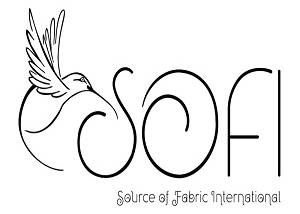For millennia, raw silk has enthralled people with its inherent beauty and sumptuous texture. This extraordinary fabric, derived from silkworm cocoons, provides a special fusion of grace, robustness, and adaptability. This essay will go into the intriguing realm of raw silk, including its properties, applications, and manufacturing methods.
How does raw silk work?
The unprocessed silk that emerges directly from the cocoon of the silkworm is referred to as raw silk. Raw silk keeps its natural, rustic look, in contrast to processed silk, which goes through several treatments and coloring processes. It has a distinct texture that distinguishes it from smoother forms of silk thanks to its somewhat coarser fibers.
How Fabric Becomes Cocoon
The silkworm, specifically the larvae of the Bombyx mori moth, is the first step in the manufacture of raw silk. When ready to pupate, these little organisms build a silken cocoon around themselves, feeding on the leaves of mulberries. A single silkworm can create up to 1,000 yards of silk thread in a few of days, which is an amazing process!
The cocoons are gathered when they have developed. The pupae inside the cocoons are frequently killed by boiling in order to produce silk. Additionally, by softening the fibers, this phase facilitates unspooling. After that, the lengthy silk threads are meticulously gathered and wound into threads. This method gives the silk a somewhat uneven texture while preserving its original qualities.
Qualities of Raw Silk
Because of its distinctive qualities, raw silk is favored by designers and craftspeople. Here are a few noteworthy characteristics:
Texture: Compared to other forms of silk, raw silk seems a little rougher and more rustic. Clothing and textiles appear more organic because of this texture.
Luster: Raw silk has a gentle, organic sheen that enhances its beauty, even if it is not as shiny as treated silk. Its subtle shine makes it appropriate for both dressy and informal ensembles.
Breathability: The ability of raw silk to breathe is one of its most alluring qualities. It is pleasant to wear in a variety of climates since it permits air to flow.
Durability: Despite appearances, raw silk is robust. Because of its strong fibers, which enable it to resist deterioration, it is a sensible material for textiles used in homes and apparel.
Dye Absorption: The vivid colors that emerge from raw silk’s exquisite dye absorption accentuate its inherent beauty. This characteristic enables artistic expression in textile and apparel design.
Applications for Raw Silk
Because of its extreme versatility, raw silk is used in many different contexts. Here are a few typical applications:
1. Style
Raw silk is a favorite material among fashion designers for dresses, blouses, and scarves. Its distinct texture gives clothes depth and personality, and its breathability guarantees comfort. Raw silk is especially well-liked for evening wear, when its opulent quality may be fully appreciated.
2. Interior Design
Silk is frequently used for cushion coverings, upholstery, and drapes in home décor. Its natural elegance elevates the aesthetics of any place, and its durability makes it a great option for high-traffic areas. The luxurious hues and patterns can enhance the design of a space.
3. Personalized Items
Silk is frequently used by artisans to create handcrafted items including purses, jewelry, and accessories. Because of the special properties of the material, elaborate patterns and textures may be created, resulting in one-of-a-kind objects that highlight their beauty.
4. Conventional Crafts
Silk has a long history of use in traditional crafts across many civilizations. For example, it is frequently used to make sarees and other ethnic clothing in India. The exquisite artistry and craftsmanship of these clothes emphasize the classic allure of this luxurious fabric.
Caring for Raw Silk
Proper maintenance is necessary to keep raw silk looking beautiful. Here are some pointers:
Gentle Cleaning: Use a light detergent and hand wash raw silk in cold water. The cloth should not be twisted or wrung out since this can harm the fibers.
Drying: Place the silk flat and keep it out of the sun. The cloth may get stretched if you hang it.
Storage: Keep raw silk in a dry, cold environment. Plastic bags should not be used as they can trap moisture and lead to mold growth. Choose breathable cloth bags instead.
In summary
A fabric that exquisitely blends luxury and nature is raw silk. It is a valued material in clothing and textiles because of its distinctive qualities, adaptability, and lengthy history. Raw silk never fails to attract those who recognize its timeless elegance, whether it’s draping a gorgeous gown or utilized to make exquisite home decor. With the right maintenance, you can enjoy this beautiful cloth for many years to come, adding a little luxury from nature to your daily existence.


